The old adage that “to finish first, first you must finish” has never seemed more pertinent than on this year’s Dakar Rally in Saudi Arabia.
Toyota Gazoo Racing’s Nasser Al-Attiyah holds a mammoth lead of over an hour from team-mate Henk Lategan after just seven of the 15 stages on the itinerary.
It’s Al-Attiyah’s rally to lose, but the competition should be there. The gaps should be much, much closer than they are.
So, why is this?
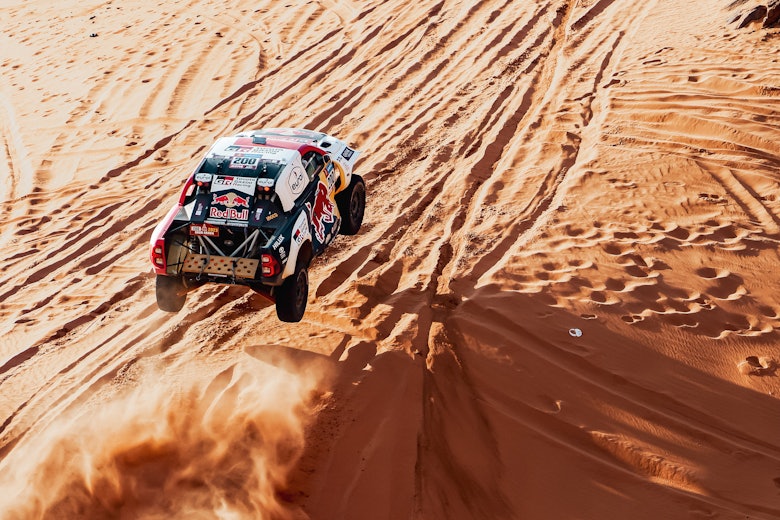
Well, simply put, the competition has effectively shot itself in the foot, through a combination of reliability issues and on-stage incidents.
And the latter is a concern for many of the T1+ and T1-Ultimate crews. Heavy impacts are proving particularly debilitating for cars and drivers.
GCK Motorsport’s Guerlain Chicherit knows all about the effects of these impacts, having blacked out after negotiating a dune on Friday’s sixth stage of the event.
Speaking to DirtFish on Saturday afternoon, Chicherit spoke of the incident the day before.
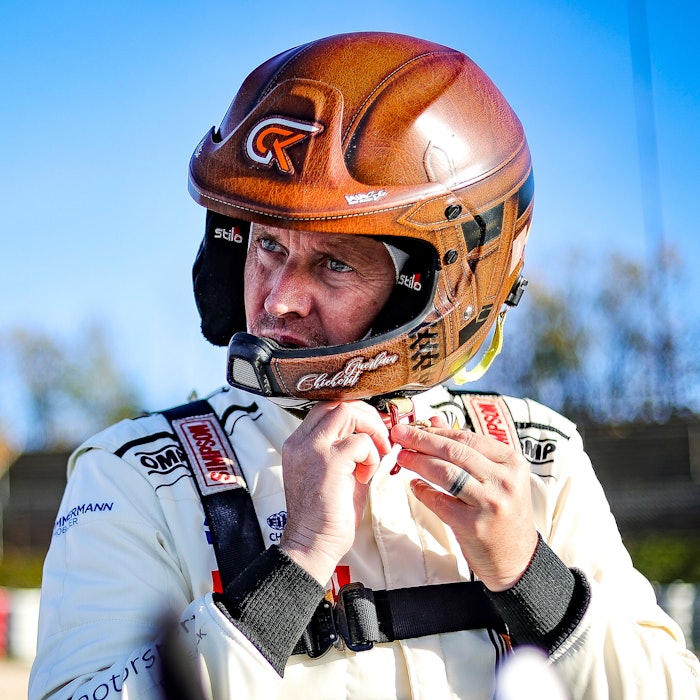
This morning I woke up as if I had a long night of drinking, I had a really strong headacheGuerlain Chicherit
“It was pretty simple, behind a small dune, we jumped and then landed on another small one, a really bad one,” Chicherit explained.
“And we had a really, really heavy impact and I was completely blacked out for a few moments, I was like not there.
“And then I wanted to throw up for the last 50km, so it was just not easy to stay on the stage and I was just trying to survive and go slow, and we finished the stage. We lost a lot of time, but we could finish the stage.
“Last night, I had a full check-up and was OK and had a good night’s sleep and took some medication. And this morning I woke up as if I had a long night of drinking, I had a really strong headache this morning.”
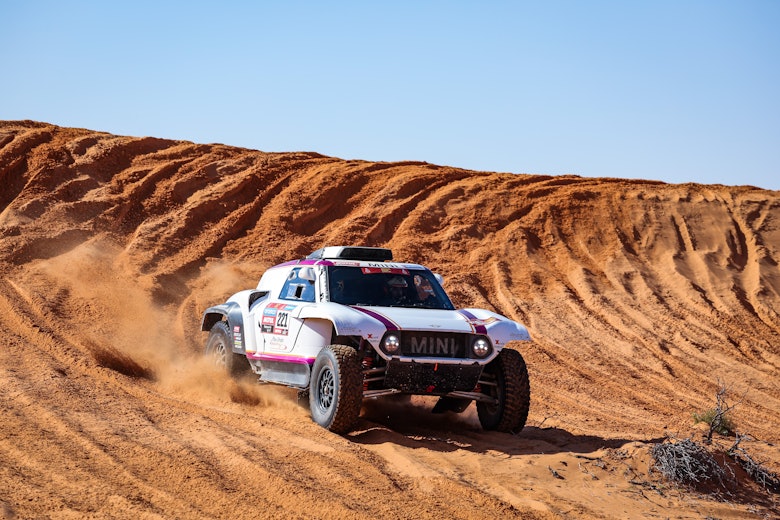
Chicherit was sent to a local hospital on Friday night for a full check-up and scan, which confirmed nothing untoward. It was up to the driver himself to sleep on it, and determine whether he felt fit to drive the 333km Marathon Stage to Al Duwadimi and continue the rally.
“To be honest, it was really hard this morning with the headache, but I was drinking a lot [of water] to get hydrated and it’s gone now,” Chicherit added. “I took some normal painkillers but maybe tonight it will come back.”
Chicherit’s blackout came around 100km before another competitor, 14-time winner Stéphane Peterhansel suffered the same fate.
The Audi RS Q e-tron E2 was on a push, trying to make up time on leader Nasser Al-Attiyah before he and navigator Edouard Boulanger crashed over a broken dune, dropping around 10 or 15 meters.
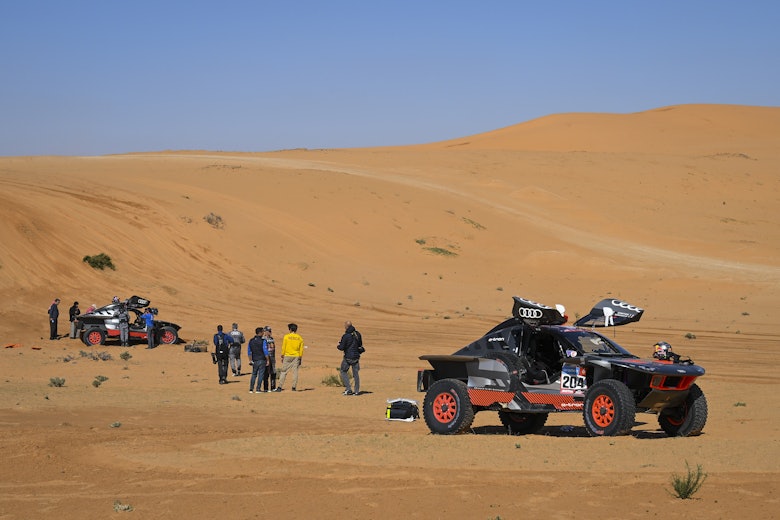
Peterhansel told TV crews on-site that the impact had knocked him out and that Boulanger – who injured his back in the impact – had to take over the control of the hybrid car.
“The sand is wet and it’s a lot harder and all of this little camel grass almost makes it like concrete,” described Peterhansel.
“We’re really at the limit of what we can ask the car to do and now what is limiting us is actually the human body. At the speed at which we arrived, we took off and then landed on the other side of a dune, in my opinion, about 10 or 15 meters down.
“And then honestly, I’ve no memory because I lost consciousness.
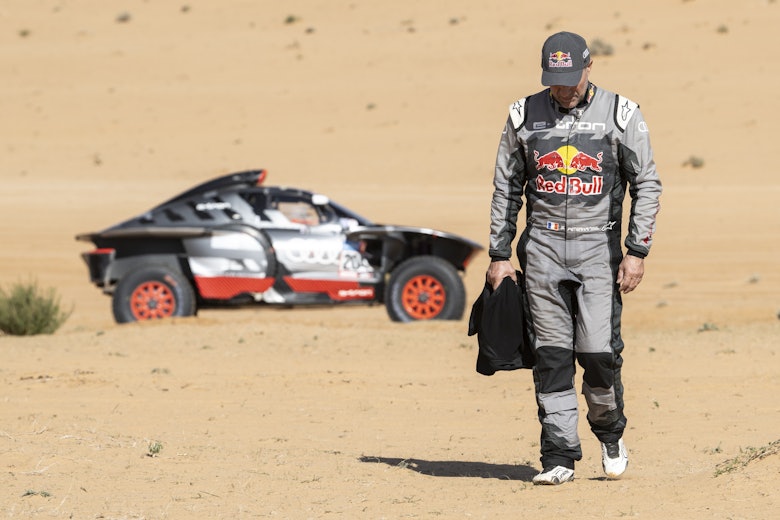
“Apparently, Edouard told me that it was him who switched the car off, and when I ‘woke up’, Edouard was no longer in the car, he was on the ground next to the car. We wanted to gain a bit more time versus Nasser but [we went] too fast.”
Rough sections on the Dakar Rally are nothing new, they’ve been part and parcel of cross-country rallying’s make-up for years. So, what’s causing such an increase in heavy landings this year?
For Toyota Gazoo Racing team principal Glyn Hall, the latest regulation set for the T1+ cars – which allow for greater suspension travel and reduced engine output of around 30kW – is forcing drivers to push over the acceptable limit on the stages.
“I have a saying in the factory,” Hall told DirtFish, “that we must make the cars stronger than the drivers so that when they hit something big, they won’t do it again.

I would say 99.9% of the time, it’s OK and the 0.1% is the really bad oneGuerlain Chicherit
“And certainly, we are approaching that. We’ve seen the height of degradation on the damper oil after a day that we used to see after four days.
“So, we really are having to do some extra maintenance, but there’s no question that this reduced power is forcing the drivers to stay on the throttle all day long, flat out, they are taking huge risks and I don’t think it can carry on for the whole rally.
“We see now, just heard that Mattias Ekström has taken a wheel off and damaged the suspension badly, so this is more proof again.”
Chicherit shares the same concerns as Hall, and reckons crews are driving at near double the speed as they had done previously.
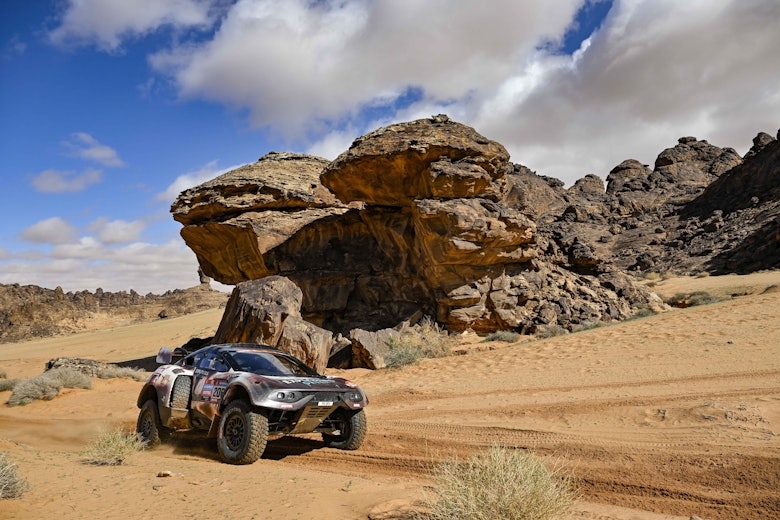
“The cars now, with the T1+, in the really rough sections, we’re going almost twice the speed as we have been going before,” Chicherit said.
“It’s insane, it’s insane. So, for sure we are taking more risks and when you arrive on these really rough and difficult sections, we are really arriving with overspeed at this point. I would say 99.9% of the time, it’s OK and the 0.1% is the really bad one.
“But it’s part of the sport and we accept it, and we have to manage to stay on the road. Even when I was driving the buggy, we had the speed but it’s still one or two seconds slower than our cars, but I never had an impact like I did yesterday.”
Driver safety is a paramount concern these days and the long-lasting effect of concussion in professional sport has become a particularly litigious subject of late.
The cars may be faster and able to withstand greater impacts than they used to in the past, but the FIA’s Cross-Country Rally Manager Jérôme Roussel says they are not necessarily to blame for the increase in incidents.
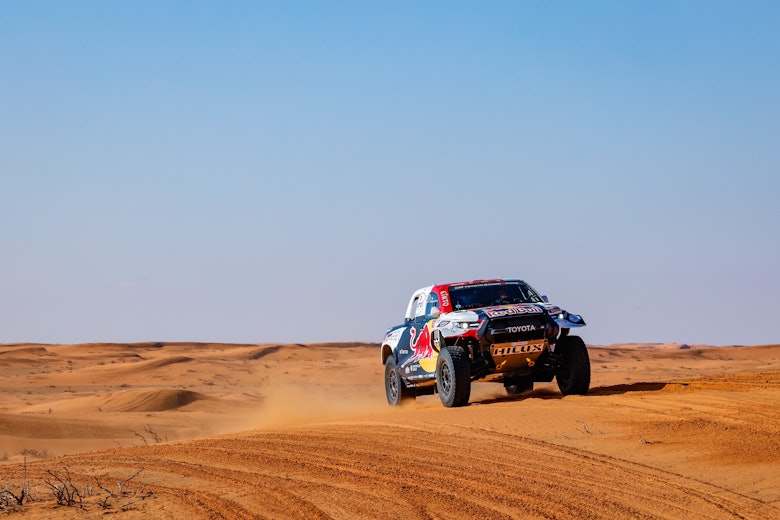
“This year the cars are supposed to be going slower, because we reduced the power compared to last year,” Roussel explained.
“So, I’m not sure if it’s to do with the cars, more the terrain. Many people talked to David Castera and said that the Dakar was too easy last year, so it’s true that the weather also played a big role in this race, we are not used to having so much rain.
“It is making the sand harder so that may be the reason, at the moment it’s difficult to give a proper explanation for this.
“In terms of driving commitment, it’s more than last year, because until a few days ago, the Audis were on the pace while last year they were quickly out of contention. Toyota and BRX have also worked a lot and we have a lot of drivers who are really fast.
“We talk with the teams all of the time and we always have discussions on how to improve the sport, and I’m sure this will be a topic for discussion in the coming months.”





